1. LINQ to SQL 概览
? 把.NET 类和 SQL 数据通过关系进行映射
? 把 LINQ 查询转化为 SQL 语言进行执行
? 支持对插入,更新,删除操作进行跟踪.
支持实体级别的验证规则
? 构建于 ADO.NET之上并且集成连接池和事务处理
1.1. LINQ to SQL 功能
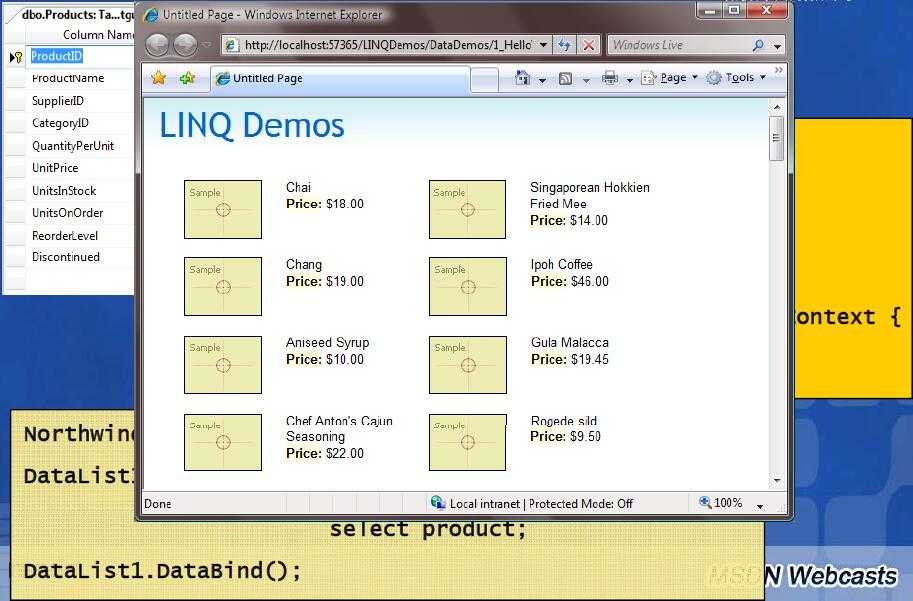
1.2. LINQ to SQL 架构
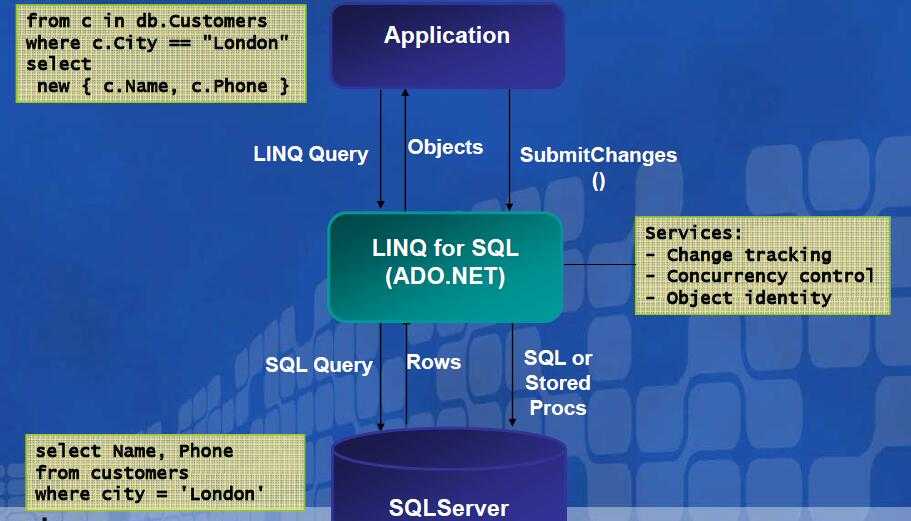
1.3. 创建对象映射
? 为了给一个特定数据库创建一个对象模型,我们必须将类映射到数据库实体当中。
? 有三种方式可以创建对象映射:
–手动创建对象映射:为现有的对象添加属性
– 使用提供的设计器来自动生成对象映射
– 使用命令行的SQLMetal 工具生成映射
2. 手动创建映射关系
? 添加 Using 指令
– using System.Data.Linq;
– using System.Data.Linq.Mapping;
? 使用属性声明
– Table 属性
– Column 属性
2.1. 添加属性声明
? [Table(Name = "Customers")]
? public class Customer
? {
? [Column]
? public string CustomerID { get; set; }
? [Column]
? public string City { get; set; }
? public override string ToString()
? {
? return CustomerID + "\t" + City;
? }
? }
3. 使用LINQ to SQL 类
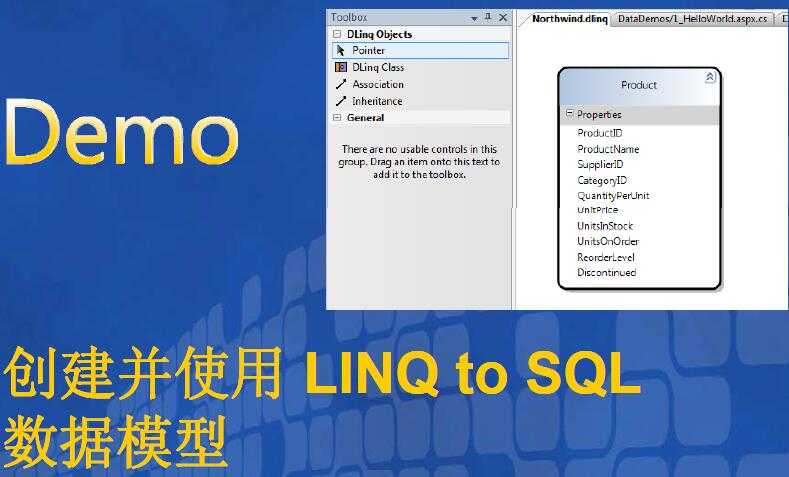
3.1. 数据表映射
? 映射数据表和实体类之间的关系
? 使用数据库中典型的主/外键进行表示
? 支持灵活的关系查询并且不用写任务的SQL 代码就可以执行处理过程
4. 使用主/外键关系
4.1. 主/外键关系
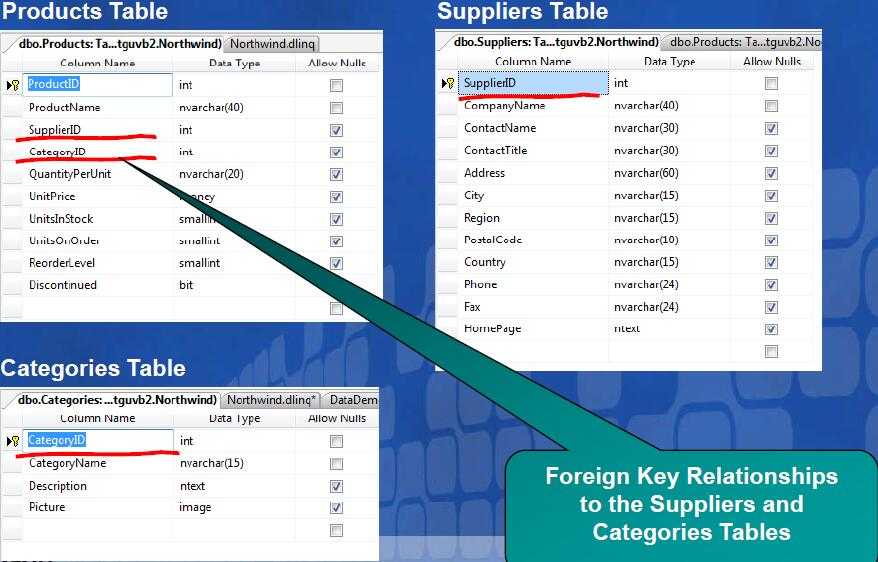
4.2. LINQ设计器中的关系映射
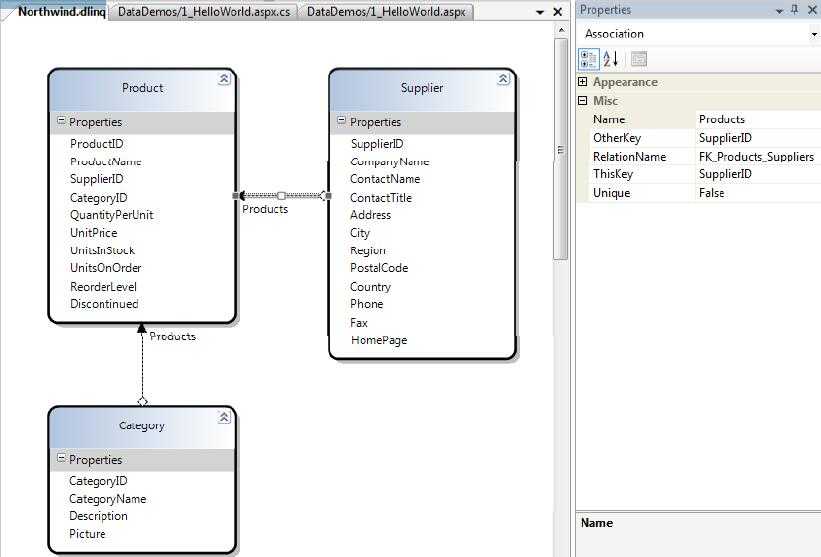
4.3. 模型中的代码关联
public partial class Product { public int ProductID; public string ProductName; public Nullable<int> SupplierID; public Nullable<int> CategoryID; public Supplier Supplier; public Category Category; } public partial class Supplier { public int SupplierID; public string CompanyName; public EntitySet<Product> Products; } public partial class Category { public int CategoryID; public EntitySet<Product> Products; }
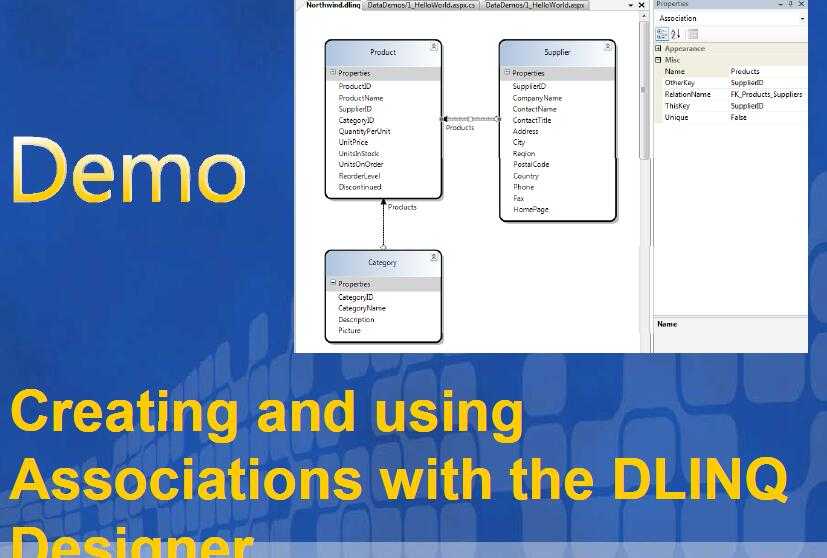
4.4. 使用主/外键关系
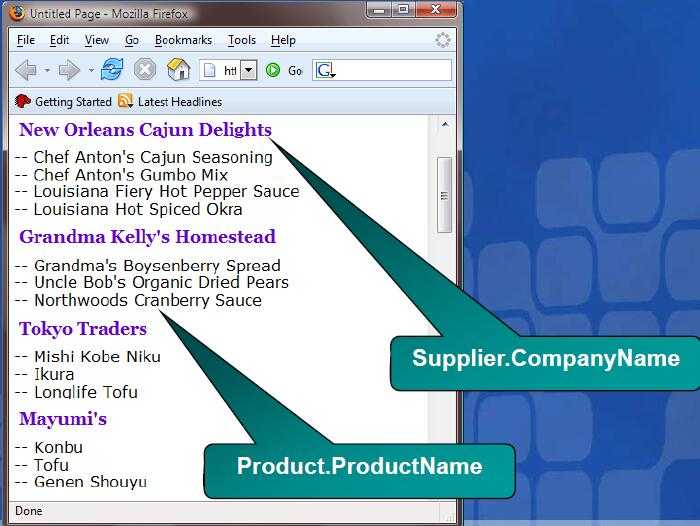
4.5. 代码
NorthwindDataContext db = new NorthwindDataContext(); (); var suppliers = from s in db.Suppliers where s.Products.Count > 2 select s; foreach (Supplier supplier in suppliers) { Response.Write("<h3>" + supplier.CompanyName + "</h3>"); foreach (Pro duct produc t in supplier.Products) { Response.Write("-- "); Response.Write(product.ProductName); Response.Write("<br/>"); } }
4.6. 使用 Suppliers 和 Products 表
NorthwindDataContext db = new NorthwindDataContext(); SupplierList.DataSource = from s in db.Suppliers where s.Products.Count > 2 select s; SupplierList.DataBind();
4.7. 使用数据关系进行绑定
<asp:Repeater ID "SupplierList" runat "server"> ID= SupplierList runat= server > <ItemTemplate> <h3> <%# Eval("CompanyName") %> </h3> <asp:Repeater DataSource=‘<%# Eval("Products")%>‘ runat="server"> <ItemTemplate> -- <%# Eval("ProductName") %> <br /> </ItemTemplate> </asp:Repeater> </ItemTemplate> </asp:Repeater>
4.8. 查看结果
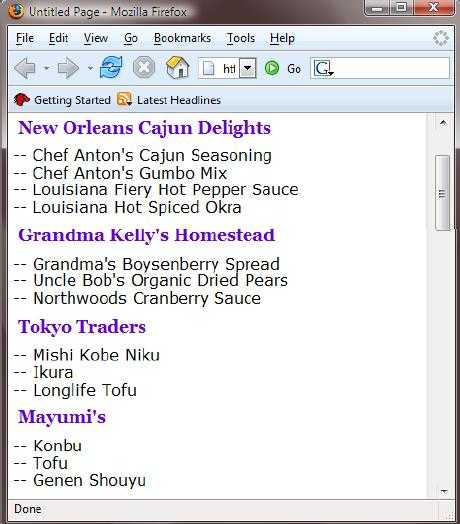
4.9. 使用 join 连结数据表
NorthwindDataContext db = new NorthwindDataContext(); var results = from c in db.Customers join o in db.Orders on c.CustomerID equals o.CustomerID into custOrders from o in custOrders select new { Customer = c.CompanyName, OrderDate = o.OrderDate, OrderTotal = o.OrderDetails.Sum(d=>d.UnitPrice) }; GridView1.DataSource = results; GridView1.DataBind();
4.10. 查看结果
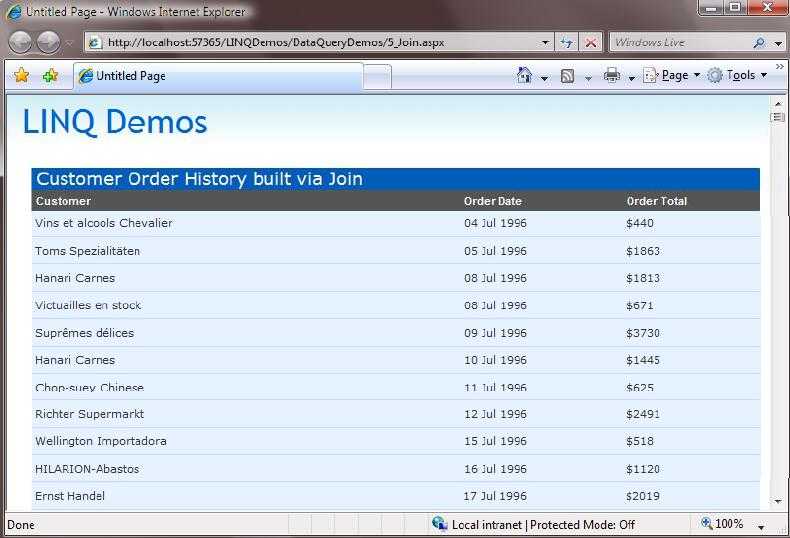
5. 数据分页
5.1. 使用 Skip() 和 Take() 进行数据分页
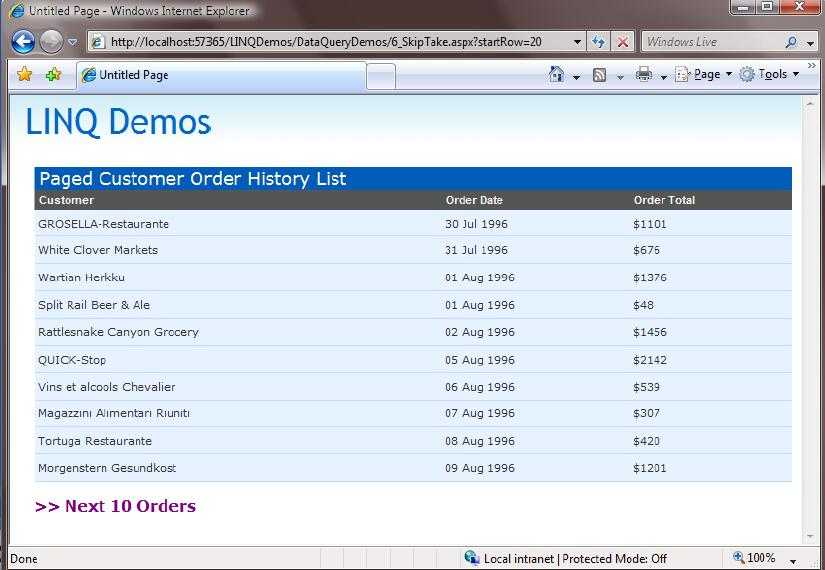
5.2. Skip() 和 Take() 方法
int startRow = Convert.ToInt32(Request.QueryString["startRow"]); NorthwindDataContext db = new NorthwindDataContext(); var results = from c in db.Customers join o in db.Orders on c.CustomerID equals o.CustomerID into custOrders from o in custOrders select new { Customer = c.CompanyName, OrderDate = o.OrderDate, OrderTotal = o.OrderDetails.Sum(d=>d.UnitPrice) }; GridView1.DataSource = results.Skip(startRow).Take(10); GridView1.DataBind();
6. 修改数据
6.1. 更新数据
NorthwindDataContext db = new NorthwindDataContext(); Product product = db.Products.Single(p => p.ProductName== "Chai"); product.UnitsInStock = 11; product.ReorderLevel = 10; product.UnitsOnOrder = 2; db.SubmitChanges();
6.2. 插入数据
NorthwindDataContext db = new NorthwindDataContext(); Supplier supplier = new Supplier(); supplier.CompanyName = "Scott Guthrie"; supplier.HomePage = "http://weblogs.asp.net/scottgu"; Product product1 = new Product(); product1.ProductName = "LINQ Talk"; product1.UnitPrice = new Decimal(99.9); Product product2 = new Product(); product2.ProductName = "ASP.NET Tips/Tricks Talk"; product2.UnitPrice = new Decimal(101.99); supplier.Products.Add(product1); supplier.Products.Add(product2); db.Suppliers.InsertOnSubmit(supplier); db.SubmitChanges();
6.3. 删除数据
NorthwindDataContext db = new NorthwindDataContext(); var supplier = db.Suppliers.FirstOrDefault(s=>s.CompanyName == “ABC"); if ((supplier != null) && (supplier.Products.Count == 0)) { db.Suppliers.DeleteOnSubmit(supplier); db.SubmitChanges(); }
原文:http://www.cnblogs.com/lxh168/p/7476338.html